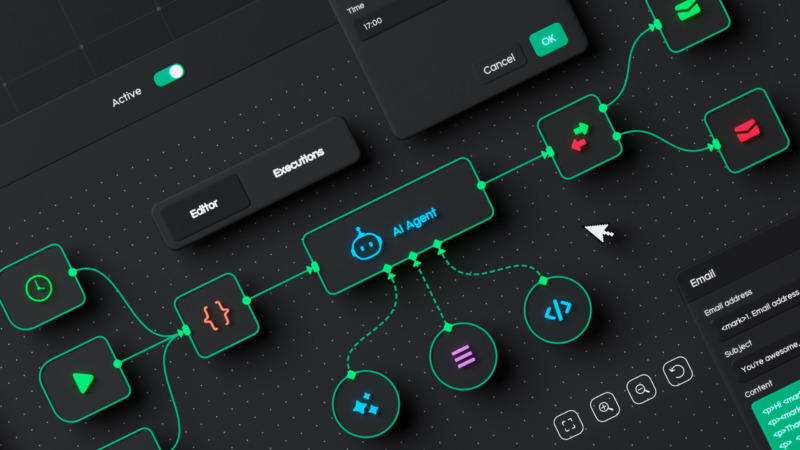Insights
Starting Your Integration Journey Right
Chamonix IT — 22 May, 2023

The Demand for Integration
Now more than ever, integration is becoming a critical capability within organisations due to the ever-increasing demand for information and a connected ecosystem. This is often driven by increasing customer expectation for modern, convenient, and real-time methods of engaging with the business and of employees who are seeking more opportunities to streamline business functions and to rapidly adopt new technologies.
The specific integration capability required within organisations differs based on the type of business and its respective operating model. Most Integration Platforms deliver a similar range of technical capabilities with the rise of cloud-based iPaaS allowing integration teams to reduce their focus on tasks that are time-consuming and complex and deliver more scalable and maintainable integration solutions faster.
Starting Out Right
Before starting a market scan to select the best-fit integration platform for your organisation, you really need to do a bit of homework here to ensure the best ROI and technical fit. Our approach at Chamonix is;
- Establish or uplift integration architectural principles as appropriate driven from larger enterprise principles that are understood and endorsed by business stakeholders. Principles are underlying general rules and guidelines to govern the integration platform.
- Define an Integration Reference Architecture which will provide you with a foundation template. The integration reference architecture describes an approach to connect components that are split across cloud and on-premises environments, or across public and private clouds — even across different cloud providers as a conceptual and logical model. Security needs to be a key consideration here as it is one of the biggest blockers to cloud based integration security and is a core pillar of our foundational reference architecture.
These will provide a foundation of common vocabulary and established integration patterns which enable informed and directed engagements to model integrated solutions with a full range of platform and software vendors.
Developing a Suitability Matrix:
The next step is to develop a suitability matrix based on functional and non-functional attributes. The functional attributes include a list of key technical functionality expected from the platform such as API Management, Connector support, Routing and Orchestration, Messaging and event, Enterprise service bus, support for common protocols and most importantly support for no/low code configuration and implementations. The key non-functional attributes are described in later section. Depending on organisation-specific needs, these can be refined.
Performing a Market Scan:
Start by creating a long list of integration platforms derived from industry research bodies. Conduct your market scan based on your organisation’s technology landscape with the help of consulting partners like Chamonix who have experience with major integration platforms as well as in- depth knowledge of the local market.
Your initial market scan might indicate that all the major tier-one Integration Platform vendors can easily achieve your functional requirements. However, this is where non-functional attributes play a major role and can reduce the candidate platform options into a more targeted shortlist of best fit platforms. We recommend 3 to 5 candidates on your shortlist.
Differentiate with non-functional attributes
Based on Chamonix’s experience in the local market, here are some of the key non-functional attributes that an organisation should be looking at to shortlist candidates. These can be refined further based on organisation-specific circumstances.
- Alignment of Integration Platform with wider Enterprise Cloud and ICT strategy
The alignment to both the current and future technology needs and alignment with broader Enterprise technology landscape. (local-to-local, local-to-cloud, cloud-to-cloud etc)
-
- The underlying technologies used are in line with Enterprise preferred technologies (i.e., preference for Azure and .Net over AWS/Google and Java).
- Alignment of Skills
- Alignment with existing skills within Enterprise IT or Digital teams
- Availability of local skills and relevance of skills with future technology trends
- Supportability
- A high degree of open, documentation and training is available and online support/user forums are highly active
- The platform is mature, stable, and proven with an active product roadmap
- Availability of multiple local implementation partners as well as platform vendor professional services
- Speed to establish the platform and operate the platform
- Ability to establish the new integration platforms quickly and without extensive technical design and configuration (i.e., HA, HP, DR, etc)
- Able to implement APIs quickly, by any integration development resource as opposed to highly specialised platform skills
- Able to maintain the integrity of the platform without requiring heavy governance or service design
- Cost alignment and control
- The platform’s upfront and operating costs are in line with budget and costs are proportionate with other platforms
- Costs are transparent and within the control of the Enterprise platform owner to optimise (i.e., without ambiguity around inclusions or expensive ongoing additions or the need to base architectural decisions around cost)
It is important to consider organisation-specific needs and objectives. However, the common traits of effective integration include the adoption of well-established integration reference architecture, patterns, principles, access to modern and intuitive technologies to develop solutions quickly.
Chamonix Integration Capabilities:
Chamonix has a wealth of experience in establishing integration capabilities for a range of organisations and we take pride in finding the appropriate balance against well-established practices, pragmatic solutions and the organisation’s specific needs.
Chamonix is an IT solutions business providing services across the full value lifecycle – from strategic planning through to implementation and operational support.
We have considerable experience in helping organisations establish highly effective integration capabilities which combines technology, architecture, and governance to meet the specific business outcomes and strategic objectives.
Our Integration Practice is technology-agnostic although has a wealth of experience across many leading, and challenger integration platforms.


